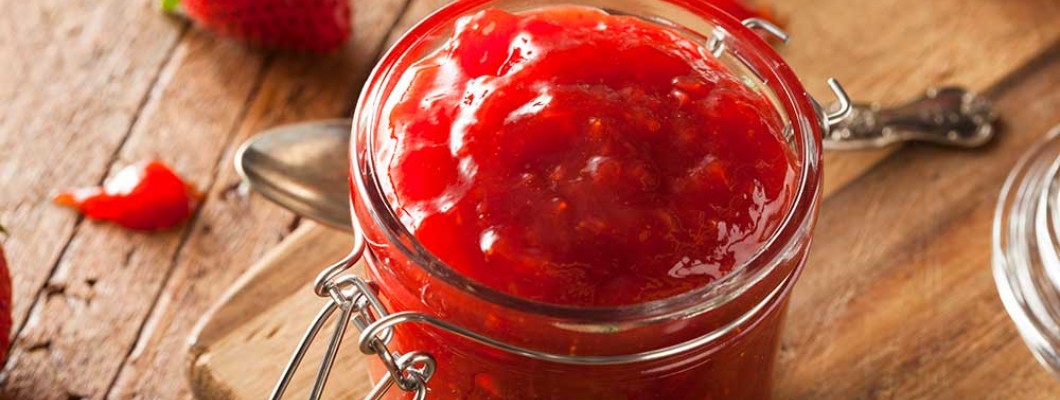
The following recipe has been kindly contributed by Vivien Lloyd, who is a renowned preserver, baker, author, and tutor. She has appeared on various TV and radio shows and is regularly featured in the press. She is the author of a number of books, including the excellent “First Preserves: Marmalades, Jams, and Chutneys," which is an authoritative guide featuring reliable recipes and explanations that are not found elsewhere. Ideal for both novices and experienced preservers, itand available now from The Bottle Co., her website, and Amazon. To find out more about Vivien Lloyd, check out her website.
In this recipe, Vivien shares her secrets for the tricky art of making strawberry jam, one of the more challenging but ultimately rewarding preserves!
The sweet-flavoured strawberries eaten today are thought to have originated from cross-breeding North American and French varieties during the eighteenth century. They are regarded as the most popular berry fruits, and they make the king of jams, even though they are poor in pectin and acid. If you are a novice jam maker, strawberry jam is one of the hardest to make. I make strawberry jam every year in response to requests from family and friends, to stretch myself, and as a refresher for judging competitions. It doesn’t get any less scary,although adding redcurrant pectin stock to my recipe and using granulated cane sugar (not jam sugar) creates a jam with a naturally rich colour, true fruit flavour, and a gelled set.
The recipe
It makes about 2.25kg (5lb)
1.58kg (3 ½ lbs) strawberries (stalks removed)
400ml (14floz) of pectin stock
1.4 kg (3lb) granulated cane sugar
Clean, sterilised Jam Jars and lids by The Bottle Company
Step 1
Make the pectin stock by simmering 1kg (2 lbs) of gooseberries or red currants, barely covered in water. Mash it thoroughly. Once the fruit is pulpy strain it into a bowl through a sieve lined with muslin. Measure the juice. Keep 400 ml (14 floz) for the recipe and freeze any left over.
Step 2
Put the fruit into a large preserving pan. Simmer until the fruit softens and the contents of the pan have reduced by a third, about 20 minutes. Add the pectin stock and bring the pan back to a gentle simmer. Continue to cook for another twenty minutes. Warm the sugar in a low oven, 140°C (120°F), 275°F, or Gas 1. Remove the sugar from the oven and place clean jars in the oven to warm for 10 minutes.
Step 3
Add the sugar to the preserving pan and stir until it has dissolved. Bring the jam quickly to a rolling boil and boil hard until the setting point is reached. Test for a set after 7 minutes using the flake, cold plate or thermometer test. For a flake test, dip a large spoon into the pan and scoop out a spoonful. Lift the spoon above the pan and turn it horizontally. If the jam has reached a setting point of 104.5°' (220°), it will drip and then hang on the side of the spoon. As soon as the setting point is reached, remove the pan from the heat and leave it to stand for 10 minutes. Push any scum from the surface of the pan to the side and remove it with a metal spoon.
Step 4
Gently stir the strawberry jam and pour it into warm, clean jars, up to the brim. Seal the jars immediately with new twist-top lids. Leave the jars upright and undisturbed to set.
Don’t forget to share your results with us—tweet us @BOTTLECOMPANYSO
